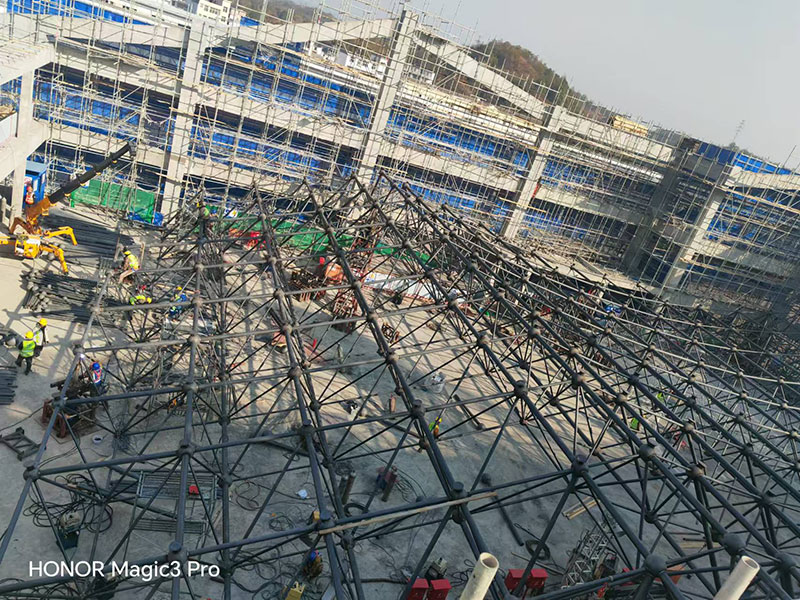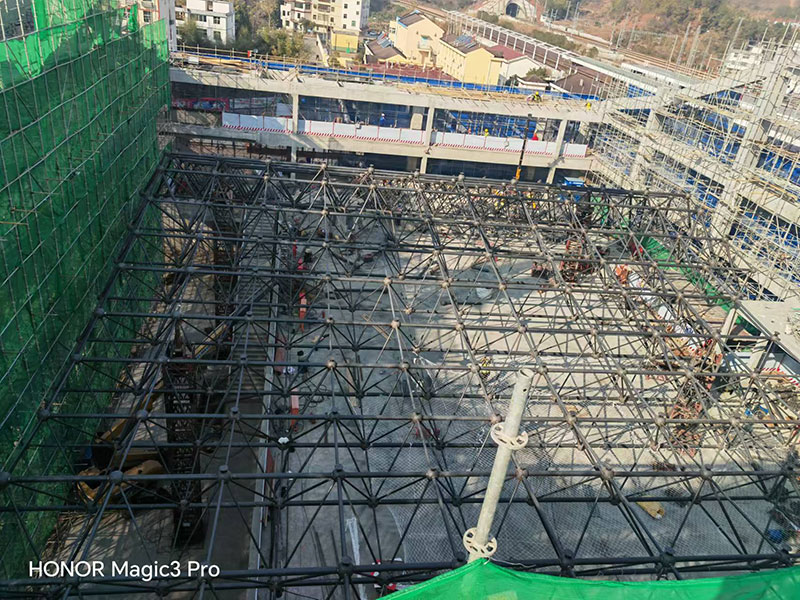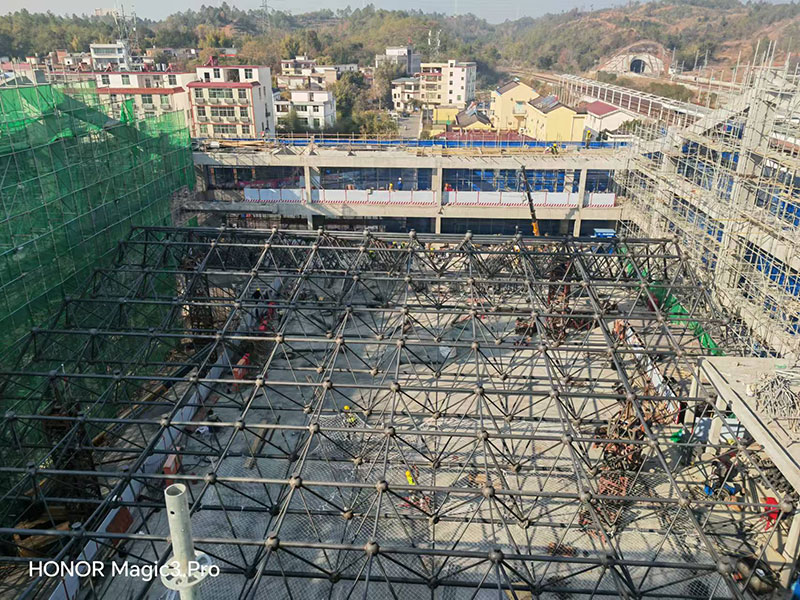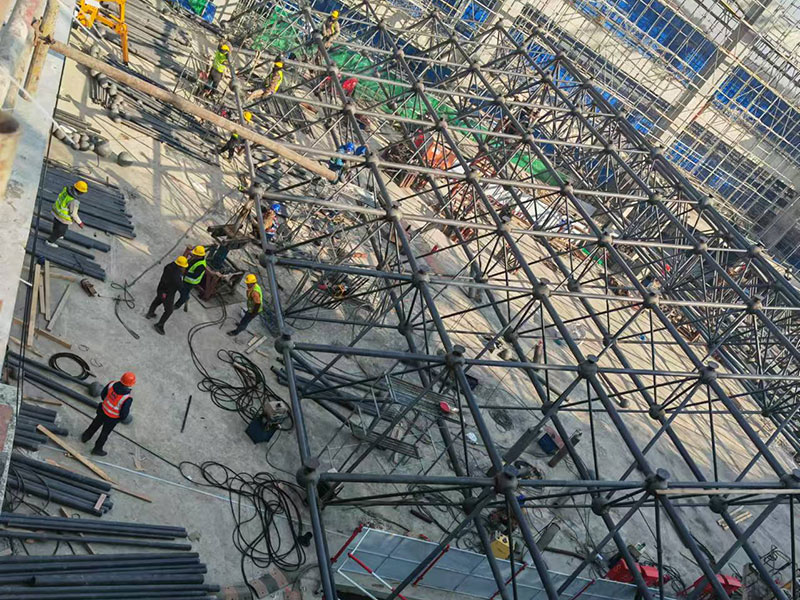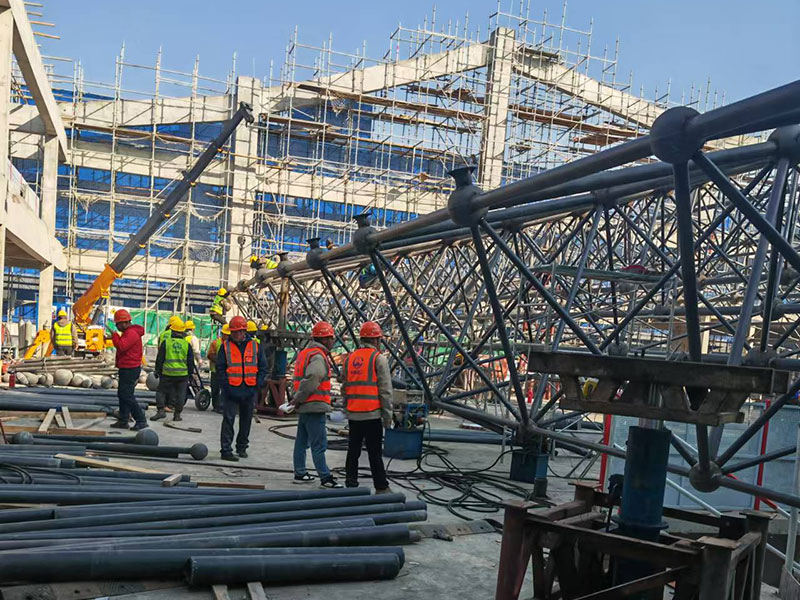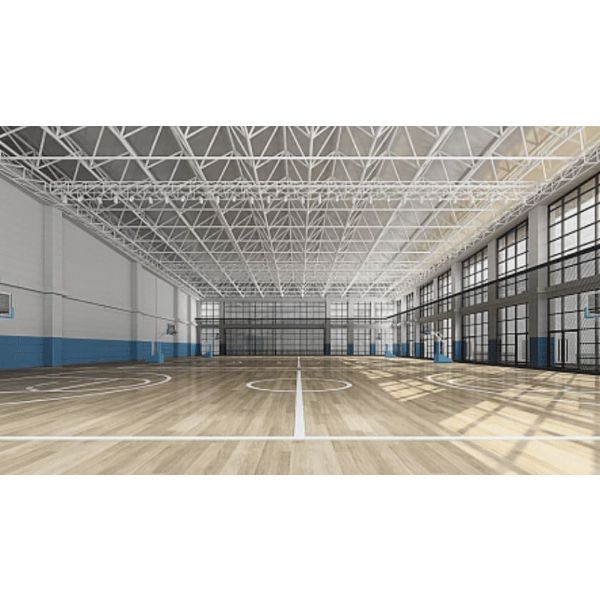Rail Station Project Details
The rail station structure at Jiangxi Yudu is an outstanding representation of modern engineering, combining strength, innovation, and efficiency through the use of advanced steel systems. With a total of 171 tons of steel incorporated into its design, this project utilizes a space grid structure to achieve durability, flexibility, and aesthetic appeal. Strategically located in Jiangxi Province, the structure plays a pivotal role in supporting railway operations while setting a benchmark for infrastructure projects across China.
This comprehensive overview examines the details of the Jiangxi Yudu rail station, including its design features, construction methodology, functional advantages, and significance in the broader context of rail station development.
Project Overview
The Jiangxi Yudu railway structure project was initiated as part of China’s commitment to strengthening and modernizing its transportation infrastructure. With the railway network continuing to expand at an unprecedented pace, there has been a growing demand for supporting structures that combine strength, durability, and long-term cost efficiency. This project represents a milestone in addressing those requirements through advanced steel construction methods.
As one of the critical facilities within the Jiangxi province, the rail station was designed to accommodate the increasing volume of passenger and freight movement. By employing a space grid steel structure, the project not only ensures exceptional load-bearing capacity but also delivers flexibility in design, making it adaptable to future expansions or modifications. This level of structural resilience is crucial for railway hubs, where safety, functionality, and reliability remain top priorities.
Beyond functionality, the Jiangxi Yudu railway structure also demonstrates how modern engineering can harmonize with aesthetics. The space grid design allows for expansive spans without the need for numerous internal supports, resulting in a streamlined architectural appearance that reflects both innovation and progress. This creates a facility that is not only practical but also visually appealing, contributing to the modernization of China’s rail station infrastructure.
Sustainability was another major focus during the development of this project. By integrating advanced steel construction techniques, the structure minimizes material waste, optimizes energy use during construction, and ensures long-lasting performance with reduced maintenance costs. The result is a facility that embodies the principles of modern transport infrastructure—durable, efficient, adaptable, and environmentally conscious.
In essence, the Jiangxi Yudu rail station structure stands as a testament to the advantages of steel construction in large-scale transportation projects. It highlights how railway structures can evolve beyond traditional limitations, offering improved efficiency, safety, and design innovation for the benefit of future generations.
Location
Situated in Yudu County, Jiangxi Province, the railway project is strategically located in a region known for its industrial development and connectivity. Jiangxi serves as a vital transport corridor, linking central China with coastal provinces and facilitating the movement of goods and passengers.
The construction of this rail station structure contributes significantly to the local economy by improving logistical efficiency, supporting regional trade, and enhancing travel convenience. Its location ensures that it will remain an integral part of the railway network for decades to come.
Steel Usage and Materials
One of the defining features of the Jiangxi Yudu rail station structure is its substantial use of steel. A total of 171 tons of steel was used in the construction, highlighting the scale and durability of the project. Steel was chosen as the primary material for several key reasons:
- Strength and Load-Bearing Capacity: Steel provides exceptional structural strength, ensuring that the rail station structure can withstand heavy loads, vibrations, and environmental stresses.
- Durability: Steel structures are resistant to corrosion, wear, and aging, making them suitable for long-term infrastructure projects.
- Flexibility in Design: The use of steel allows for innovative design solutions, such as the incorporation of a space grid system.
- Ease of Construction: Prefabricated steel components can be manufactured off-site and assembled quickly, reducing construction time and costs.
The choice of steel underscores the project’s emphasis on quality, efficiency, and sustainability, ensuring the railway structure meets modern engineering standards.
Structural Design: Space Grid System
At the core of the Jiangxi Yudu rail stationstructure is the space grid structure, an advanced form of three-dimensional framework that distributes loads efficiently and allows for large, unobstructed spans.
Features of the Space Grid Structure
- Three-Dimensional Support: Unlike traditional two-dimensional trusses, space grids use a network of interconnected nodes and struts to provide stability in all directions.
- Large Spans: The system allows for wide, column-free spaces, ideal for railway structures that require open areas for passenger flow, cargo handling, or overhead covering.
- Load Distribution: Loads are shared among multiple points, reducing stress concentrations and improving overall structural performance.
- Aesthetic Appeal: The geometric patterns created by space grids contribute to a modern, visually appealing architectural style.
Benefits for Rail Station Projects
The use of a space grid in this railway structure ensures functionality without compromising design. By eliminating the need for multiple interior columns, the system provides open and flexible space, which is essential for railway operations. Furthermore, the space grid enhances durability, reduces maintenance needs, and allows for potential future modifications or expansions.
Construction Process
The construction of the Jiangxi Yudu railway structure was a carefully planned process that balanced efficiency, precision, and safety.
Site Preparation
Before construction began, the site underwent extensive preparation, including soil analysis, leveling, and foundation works. The foundation was designed to support the weight of 171 tons of steel while accounting for dynamic railway loads and environmental conditions.
Prefabrication of Steel Components
To ensure quality and precision, steel components were prefabricated in specialized factories. Each beam, strut, and node was manufactured to exact specifications before being transported to the site. Prefabrication reduced construction time and ensured consistency in quality.
Assembly of the Space Grid
On-site, the prefabricated steel components were assembled into the space grid framework. Cranes and lifting equipment were used to position the modules, while advanced welding and bolting techniques secured the connections. Rigorous inspections were carried out at each stage to ensure structural integrity.
Finalization
Once the space grid structure was complete, finishing works such as roofing, cladding, and protective coatings were added. These finishing touches not only enhanced durability but also contributed to the visual appeal of the railway structure.
Functional Advantages
The Jiangxi Yudu railway structure offers several key functional advantages that make it a model for future infrastructure projects:
- Unobstructed Interior Space: The large-span space grid provides open areas, ensuring smooth passenger movement and efficient cargo handling.
- Structural Stability: The space grid system distributes loads evenly, making the structure resistant to environmental stresses like wind, seismic activity, and vibrations from trains.
- Low Maintenance: Steel structures require less upkeep compared to traditional materials, reducing long-term operational costs.
- Flexibility and Adaptability: The modular design of the space grid allows for modifications or expansions as operational needs evolve.
- Aesthetic Value: The modern geometric design enhances the architectural appeal of the railway facility, creating a landmark structure for the region.
Significance in Railway Infrastructure
The Jiangxi Yudu railway structure holds significant importance within China’s expanding railway infrastructure network.
Supporting Passenger and Cargo Needs
The structure provides essential support for both passenger services and cargo logistics. Its spacious design ensures efficient movement, reducing delays and improving the overall travel experience.
Contribution to Regional Development
By enhancing the functionality of the railway system in Jiangxi, the structure supports regional economic growth. It facilitates trade, improves accessibility, and strengthens connections between industrial centers and markets.
Benchmark for Modern Rail Station Projects
The successful completion of the Jiangxi Yudu rail station structure demonstrates the potential of space grid systems in railway applications. It serves as a benchmark for future projects, showing how steel structures can combine strength, efficiency, and aesthetics.
Sustainability and Longevity
Sustainability was a key consideration in the design and construction of the Jiangxi Yudu railway structure.
- Efficient Material Use: The space grid design minimizes material usage while maximizing structural performance.
- Energy Efficiency: Natural lighting and ventilation can be integrated into the structure, reducing energy consumption during operations.
- Durability: The steel framework, with proper protective coatings, ensures a long service life, reducing the need for frequent renovations or replacements.
By focusing on sustainability, the railway structure not only meets current demands but also ensures long-term value for future generations.
Engineering Achievement
The Jiangxi Yudu project represents an important engineering milestone. Constructing a rail station structure of this scale, with 171 tons of steel and a space grid framework, required advanced planning, precise execution, and innovative solutions. The successful completion of this project highlights the skills of the engineers and architects involved, as well as China’s growing capabilities in infrastructure development.
Conclusion
The Rail Station structure at Jiangxi Yudu is a remarkable achievement in modern infrastructure, blending advanced steel engineering with practical functionality. With 171 tons of steel used in its construction and the implementation of a space grid structure, the facility provides durability, efficiency, and aesthetic appeal.
Its strategic location in Jiangxi enhances regional connectivity, supports economic growth, and strengthens China’s railway network. The project stands as a testament to the effectiveness of space grid structures in creating large, open, and resilient railway facilities.
As railway systems continue to expand and evolve, the Jiangxi Yudu rail station structure will serve as a benchmark for future projects, illustrating how thoughtful design, innovative engineering, and sustainable practices can shape the infrastructure of tomorrow.

